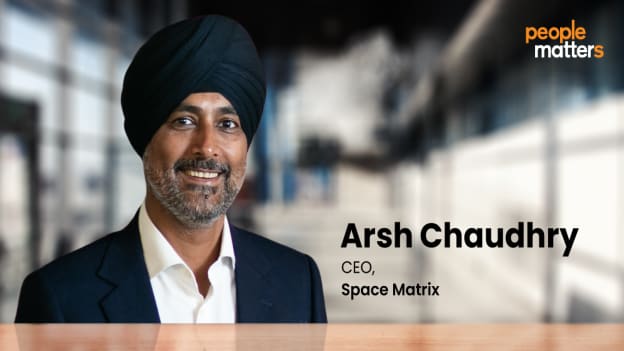The shifting mandate for office design

The traditional office model has been thrown into disarray. The rise of asynchronous work arrangements, hybrid models, and the ongoing "return to work" mandates– all happening alongside evolving employee needs – have created a complex puzzle for companies. This is particularly pressing in the Asia-Pacific region, where a staggering 85% of the workforce is already back in the office.
Companies are forced to question the very raison d'être of physical space. It's no longer about simply maximising output per square foot–it’s rethinking employee value propositions and being able to attract and retain top talent.
The shift in focus transcends aesthetics or basic functionality. It's about creating a purpose-driven workspace –one that prioritises well-being, ignites creativity, and fosters a strong sense of belonging.
The modern office helps attract and retain talent and fosters collaboration and knowledge sharing. And it aligns employees with the company culture. Designed with purpose, well-being, and diverse work styles in mind, these spaces play a crucial role in keeping employees happy and engaged.
Studies provide compelling evidence that design elements like natural light, collaborative spaces, and catering to diverse work styles demonstrably impact employee engagement and productivity.
Arsh Chaudhry, CEO of Space Matrix, a workplace design company, explains this shift reflects a deeper understanding: "For decades, workplaces were viewed from the lens of productivity, optimised for individual output," he explains. "Now, the focus is on the whole human being – their well-being, creativity, and diverse work styles."
Beyond just a work desk
"People don't just crave a desk anymore. They want an environment imbued with the company's core values, an experience that reinvigorates their drive and fosters seamless collaboration," Chaudhry explains. "That's what gives organisations a competitive talent edge."
This commitment to employee experience extends functionality to embrace conscious design. "Environmental and social sustainability isn't just a PR objective, it's a fundamental demand from companies and employees who want their spaces to align with their ESG principles," states Chaudhry. "Conscious design is about crafting workplaces that are ethical and inspiring - places employees can feel good occupying."
The demand for sustainable workplaces is expected to continue rising, driven by businesses' focus on ESG goals. Space Matrix has aligned its sustainability practices with the Science Based Targets initiative (SBTi), ensuring its designs contribute positively to the planet and its people.
‘We take a thoughtful approach to technology integration as well,” says Arsh. Their Workspace OS platform manages scheduling and visitor management to security and even lighting and temperature control.
Chaudhry envisions a world where "your office anticipates your needs, adjusts lighting for optimal focus, and facilitates effortless collaboration – that's Workspace OS."
However, he emphasises that technology is not a replacement for human interaction, but rather a tool to enhance it: "We understand how people work, and our technology is designed to complement, not replace, these interactions."
People-first culture
Space Matrix, with its 600 professionals across 16 offices, embodies a people-first culture for themselves. "We invest heavily in learning and development for our employees," explains Chaudhry. "This encourages motivation, leads to greater creativity, and improves employee retention."
By intentionally designing communal areas that foster collective creativity, interaction, and client engagement, they ensure its workplaces are not just functional but truly inspiring.
Chaudhry acknowledges the challenges ahead. The convergence of technology and conscious design presents both risks and rewards. While various point solutions exist, integrating them seamlessly remains a hurdle. To address this, the office design company has developed a proprietary platform that vertically integrates design, procurement, and project management, positioning them as a leader in a fragmented market.
As Space Matrix looks to the future, Chaudhry advocates for a seismic shift in the industry's perspective. Chaudhry believes the workspace revolution's success hinges on changing an industry-wide mindset: moving beyond cost-centric metrics like square footage toward empathetic, human-centric design.
"To empower workforces for an uncertain future, leaders must prioritise questions like: 'Will this design nurture belonging across diverse teams? Will it augment human potential through smart technology?'" Chaudhry challenges. "Those who think design-first and craft spaces suited for both work and wellbeing will thrive in the business landscape ahead."
By embracing this mindset, organisations can unlock the full potential of their workspaces, cultivating adaptability, resilience, and innovation – the very qualities that will define the businesses of tomorrow.
As the world of work continues to evolve, creating spaces that not only inspire but empower organisations to thrive will be essential. Remaining steadfast in the commitment to putting people at the heart of design will be key to achieving this.






